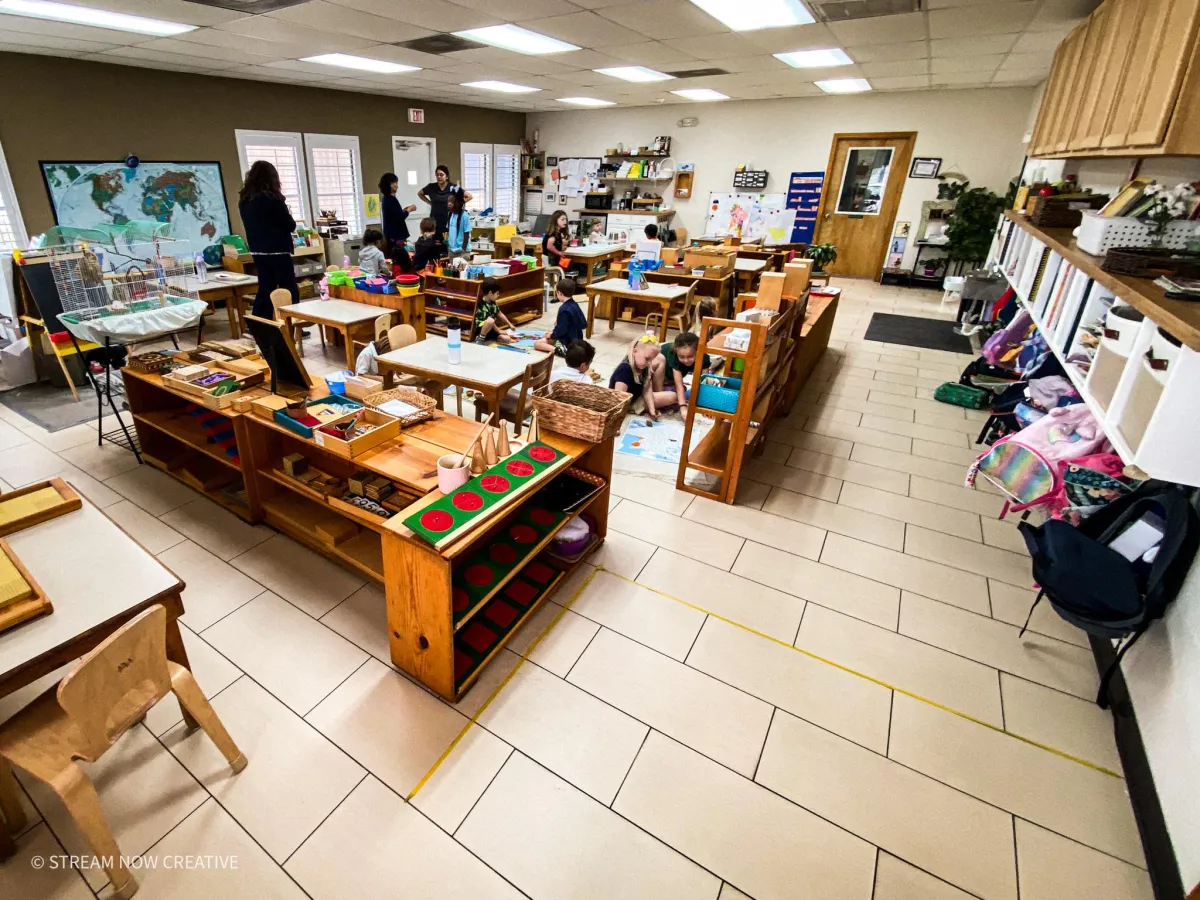
Beyond the Stereotypes: What a Montessori Classroom Really Looks Like at ArborCreek
When you hear "Montessori," what comes to mind? Perhaps images of quiet, serious children working alone, or a classroom that feels overly rigid and structured? These are common misconceptions, but they couldn't be further from the vibrant, dynamic reality of an authentic Montessori classroom, especially here at ArborCreek Montessori. At ArborCreek, we're dedicated to a true Montessori experience that fosters independence, a love of learning, and a deep sense of community.1
Let's pull back the curtain and explore what a typical day and environment at ArborCreek Montessori truly entail, dispelling those persistent myths and revealing the magic of the prepared environment.
Myth 1: Montessori is a "Free-for-All" with No Structure.
The ArborCreek Reality: Freedom Within Limits, Guided by Observation
One of the most pervasive myths is that Montessori classrooms lack discipline or structure. While children at ArborCreek enjoy a remarkable degree of freedom, it's always "freedom within limits." Our classrooms are meticulously designed with a "prepared environment" where every material has a purpose and a designated place.2
At ArborCreek, you won't see a teacher standing at the front of the room delivering lectures to a passive audience. Instead, you'll observe children moving purposefully around the classroom, choosing activities that intrigue them. This child-led learning is foundational. A child might choose to work with the Pink Tower to explore dimensions, then move on to a Practical Life activity like polishing silver, and later, collaborate with a peer on a geography puzzle map.
Our highly trained Montessori Guides are not lecturers but keen observers. They watch each child's engagement, identify their sensitive periods (natural windows of intense interest), and then offer individualized lessons.3 This personalized approach ensures that children are constantly challenged and engaged, but never pushed beyond their readiness or bored by repetition.4 The structure comes from the carefully prepared environment and the consistent, gentle guidance of our teachers.
Myth 2: Montessori is Too Strict and Lacks Creativity/Play.
The ArborCreek Reality: Fostering Concentration, Imagination, and Collaborative Play
Some mistakenly believe Montessori stifles creativity. On the contrary, by allowing children to delve deeply into their chosen "work," Montessori cultivates intense concentration – a skill crucial for all future learning.5 When a child is engrossed in a Sensorial material like the Geometric Cabinet, they are developing not just visual discrimination but also problem-solving skills and an appreciation for order and beauty.6
Play, in the traditional sense, looks different in a Montessori setting. Our "work" is play to the child, as it is self-chosen and intrinsically motivating. Practical Life activities, such as pouring, scooping, washing dishes, or arranging flowers, might seem mundane to an adult, but for a child, they are deeply satisfying tasks that build real-world skills, coordination, and a sense of accomplishment.7 These activities are the foundation for more complex academic work.
Furthermore, creativity at ArborCreek flourishes through exploration with open-ended materials, art projects, storytelling, and collaborative work. You'll see children engaging in imaginative role-playing, constructing elaborate creations with building blocks, or expressing themselves through various artistic mediums. The freedom to explore and experiment, without constant adult direction, actually empowers their imagination.8
Myth 3: Montessori Classrooms Are Just for Preschoolers.
The ArborCreek Reality: Multi-Age Classrooms Nurture All Ages (Toddler through Elementary)
It's true that Montessori is well-known for its success with preschoolers, but the method extends far beyond.9 At ArborCreek Montessori, our programs cater to toddlers, primary (preschool-kindergarten), and elementary-aged children.10
A hallmark of the Montessori approach, prominently featured at ArborCreek, is the multi-age classroom.11 Our primary classrooms, for example, typically group children from ages 3 to 6.12 This mirrors real-world family and community dynamics and offers profound benefits:
Mentorship: Older children solidify their understanding by guiding and teaching younger peers, developing leadership skills and empathy.13
Inspiration: Younger children are inspired by observing the advanced work of their older classmates, naturally aspiring to master those skills.14
Individualized Pacing: Children can progress at their own pace without feeling rushed or held back.15 A 4-year-old ready for early reading can work on Sandpaper Letters and the Movable Alphabet, while a 5-year-old who needs more time with math manipulatives like the Golden Beads can do so without pressure.
Community: The multi-year relationship with the same teacher fosters deep trust and understanding, allowing the educator to truly know each child's learning style and needs.16
Myth 4: Montessori Lacks Academic Rigor.
The ArborCreek Reality: A Deep Dive into Language, Math, and Cultural Studies
Far from lacking academics, Montessori provides a robust and comprehensive curriculum that often exceeds traditional benchmarks.17 The difference is how the learning happens. Abstract concepts are introduced concretely through hands-on materials.18
At ArborCreek, our classrooms are rich with specialized Montessori materials that engage all senses:19
Language Arts: Children develop pre-reading and writing skills through Sandpaper Letters, the Movable Alphabet, and phonetic reading materials. Vocabulary expands through classification cards and engaging storytelling.20
Mathematics: From the Number Rods and Golden Beads that teach quantity and decimal system concepts to the Checkerboard for multiplication, children grasp complex mathematical operations tangibly, building a deep conceptual understanding before moving to abstract equations.
Cultural Studies: Geography, history, botany, zoology, and science are explored through puzzle maps, globes, real specimens, and hands-on experiments.21 Children might be identifying continents, learning about different biomes, or classifying animals.
At ArborCreek Montessori, we are committed to providing an authentic Montessori education. It's an approach that respects the child as an individual, nurtures their innate curiosity, and empowers them to become confident, self-directed learners and compassionate global citizens.22 We invite you to visit ArborCreek and witness this remarkable educational experience for yourself. See beyond the stereotypes and discover the true beauty and effectiveness of a Montessori classroom in action.
